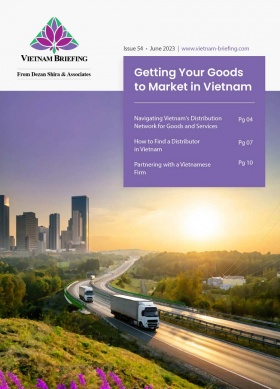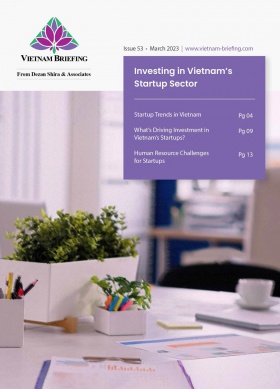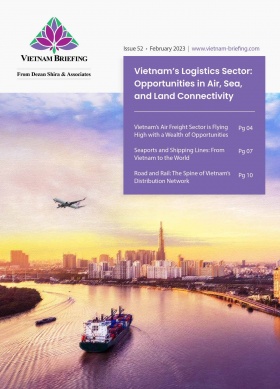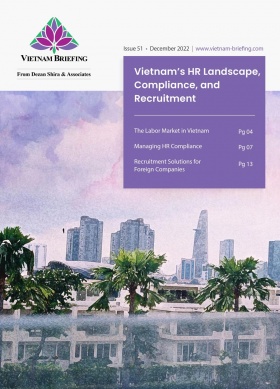Key Areas of Vietnam’s Real Estate Market Set for Growth
After five years of relative stagnation, 2015 looks to be a strong year for Vietnam’s real estate market. The country’s government has undertaken a number of important legal and regulatory changes to improve the market situation and encourage foreign investment. Below we consider some of the key areas for investment in the real estate market for 2015.
Industrial zone real estate
2015 is expected to be another strong year for growth in industrial zone development. The projected increase in demand for 2015 is the result of the positive growth seen in 2014, in which Foreign Direct Investment (FDI) into Vietnam was one of the highest in the ASEAN region. Additionally, as Vietnam’s export industry continues to grow, more development is expected in IZs as companies look to expand their operations.
Circular No. 36/2014/TT-NHNN
A further boost to the market has resulted from recent regulation from Vietnam’s central bank. The purpose of Circular No. 36/2014/TT-NHNN (issued in 18/11/2014, effective 01/02/2015) is to reduce the risk banks must undertake when they loan out money for real estate development – reducing the risk weight of loans granted from the current 250 percent to 150 percent. This is expected to increase the amount of loans available for investors.
Investment returns for properties located in industrial zones located near major cities, such as Hanoi and HCMC, are forecast to be seven to 10 percent.
![]() RELATED: Understanding Vietnam’s Import and Export Regulations
RELATED: Understanding Vietnam’s Import and Export Regulations
Mid-level and luxury apartments
Buildings that are ready to handover or are in the final state of construction are predicted to have the highest profit potential for 2015. The recently issued Amended Housing Law, which goes into effect July 1, 2015, encourages an increase in investment by making it easier for foreign individuals and firms to buy and own real estate.
Circular 32
On November 25, 2014, the central bank’s Circular 32 came into effect. This circular simplified lending procedures and enabled more people to access a VND50 trillion credit package, which was recently provided by the government. As a result of the influx of credit available, demand for apartments is expected to sharply increase. According to market analysts, monthly rent from an apartment could generate revenue of 0.5 percent to 0.75 percent over the total value of the apartment, depending on the location, utilities, and furniture conditions.
Resorts
In the past six months, Vietnam’s resort real estate market has seen strong signs of positive investor sentiment. This has been buoyed by the healthy growth in the country’s tourism sector. An additional reason for the strong outlook in this sector is the newly amended Real Estate Business Law, which goes into effect July 1, 2015, and which aims to stabilize the market by limiting the entry of market participants based on the financial situation of the firms.
Predictably, new resort developments mainly center on Vietnam’s scenic coastal zones in areas that are strategically located near highways, airports, etc. Investment flow for these types of projects tends to be long-term, with a turnover period of six to 10 years.
![]() RELATED: Dezan Shira & Associates’ Pre-Investment and Entry Strategy Advisory
RELATED: Dezan Shira & Associates’ Pre-Investment and Entry Strategy Advisory
|
Asia Briefing Ltd. is a subsidiary of Dezan Shira & Associates. Dezan Shira is a specialist foreign direct investment practice, providing corporate establishment, business advisory, tax advisory and compliance, accounting, payroll, due diligence and financial review services to multinationals investing in China, Hong Kong, India, Vietnam, Singapore and the rest of ASEAN. For further information, please email vietnam@dezshira.com or visit www.dezshira.com. Stay up to date with the latest business and investment trends in Asia by subscribing to our complimentary update service featuring news, commentary and regulatory insight. |
Import and Export: A Guide to Trade in Vietnam
In this issue of Vietnam Briefing Magazine, we provide you with a clear understanding of the current business trends related to trade in Vietnam, as well as explaining how to set up your trading business in the country. We also attempt to give perspective on what will be Vietnam’s place in the Association of Southeast Asian Nations (ASEAN) in 2015, and look at some of the country’s key import and export regulations.
 Tax, Accounting, and Audit in Vietnam 2014-2015
Tax, Accounting, and Audit in Vietnam 2014-2015
The first edition of Tax, Accounting, and Audit in Vietnam, published in 2014, offers a comprehensive overview of the major taxes foreign investors are likely to encounter when establishing or operating a business in Vietnam, as well as other tax-relevant obligations. This concise, detailed, yet pragmatic guide is ideal for CFOs, compliance officers and heads of accounting who need to be able to navigate the complex tax and accounting landscape in Vietnam in order to effectively manage and strategically plan their Vietnam operations.
 An Introduction to Doing Business in Vietnam 2014 (Second Edition)
An Introduction to Doing Business in Vietnam 2014 (Second Edition)
An Introduction to Doing Business in Vietnam 2014 (Second Edition) provides readers with an overview of the fundamentals of investing and conducting business in Vietnam. Compiled by Dezan Shira & Associates, a specialist foreign direct investment practice, this guide explains the basics of company establishment, annual compliance, taxation, human resources, payroll, and social insurance in the country.
- Previous Article Market Insight: Vietnam’s Wine Industry
- Next Article Vietnam Ripe for Green Investment










